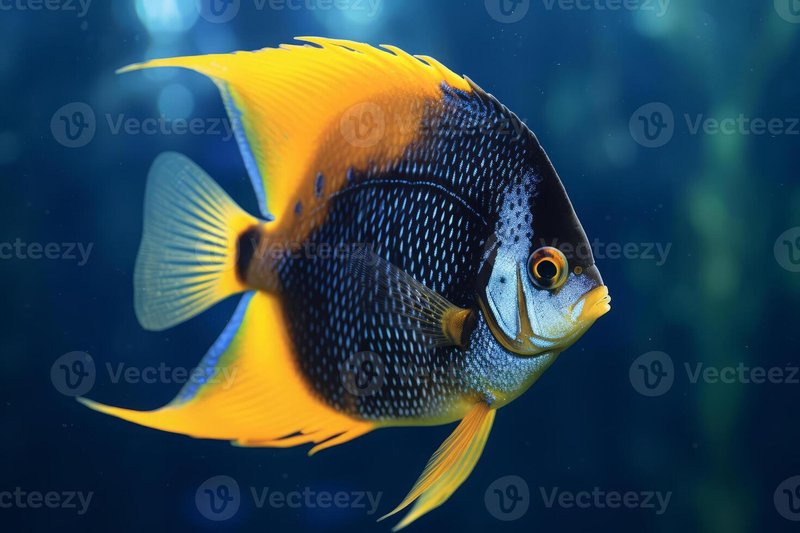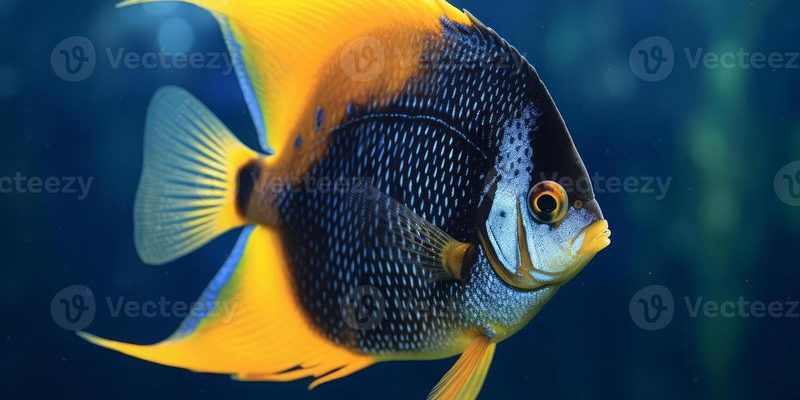
Angelfish belong to the family Pomacanthidae and are well-known for their brilliant colors and unique shapes. With over 80 species, they add a splash of beauty to coral reefs and other marine habitats. So, why should we care about them? Well, angelfish contribute to the ecological balance, play a role in algae control, and support the health of coral reefs. Let’s dive in and explore exactly how these stunning fish make waves in their ecosystems.
What Are Angelfish?
Angelfish are small to medium-sized fish known for their vibrant colors and elaborate body shapes. Typically found in warm, shallow waters of the Pacific and Atlantic Oceans, they often inhabit coral reefs, lagoons, and rocky coasts. The most common species include the Queen Angelfish and the Blue Angelfish, each boasting stunning hues that range from blues to yellows and greens.
These fish usually grow to about 12 inches, though some types can reach even 18 inches. What’s fascinating about angelfish is their behavior—many are territorial and can be quite bold. They often hide among the corals, darting out to inspect their surroundings. You might even spot them working with their partners during mating season, showcasing their social dynamics, which are as colorful as their scales!
The Role of Angelfish in Coral Reef Health
Coral reefs are often called the “rainforests of the sea,” and angelfish are vital players in this intricate ecosystem. They thrive among corals, where they help maintain the reef’s health by feeding on algae and parasites. This is critical because too much algae can smother corals, blocking the sunlight they need to grow.
When angelfish eat algae, they not only keep it in check but also promote the overall biodiversity of the reef. Healthy corals provide shelter and food for many other marine animals. Imagine a bustling marketplace: if one vendor goes out of business (like corals dying), it affects everyone else. So, when angelfish do their part, they ensure that this underwater marketplace remains vibrant and diverse.
Angelfish and Algae Control
Another critical function of angelfish is their role in algae control. By munching on algae, these fish prevent overgrowth, which can choke out corals and other marine life. You might not think that a tiny fish could have such an impact, but here’s the thing: every little bit counts!
Angelfish graze on algae throughout the day, maintaining balance in their habitat. In areas where angelfish populations decline, unchecked algae can lead to “algal blooms.” This can cause major problems, like diminished oxygen levels in the water and harm to other marine species. It’s a bit like when weeds take over your garden; without control, they can overshadow and kill off the plants you want to thrive.
Angelfish as Indicators of Ecosystem Health
Angelfish are often seen as indicator species. That means their presence can tell us a lot about the overall health of a marine environment. Since they are sensitive to changes in water quality, pollution, and habitat destruction, they can serve as a warning sign for environmental shifts.
For instance, in areas with too much pollution or marine degradation, populations of angelfish may decline. Conservationists and researchers often monitor these populations to assess the health of marine ecosystems. It’s similar to how certain birds can indicate air quality on land. By keeping an eye on angelfish, we gain insight into the state of our oceans.
How Angelfish Support Biodiversity
Angelfish contribute to biodiversity in several ways, directly and indirectly. By feeding on certain organisms like algae, they help maintain the complex web of life surrounding them. Healthy populations of angelfish can enhance reef structure, which, in turn, offers habitat for many other species.
Plus, angelfish don’t just exist in isolation; they interact with other fish and marine life. For example, their feeding habits can influence the distribution of other algae-eating fish. When angelfish consume algae, they create space for other species to thrive. It’s like a dance of life, where each partner plays a role in creating a harmonious performance beneath the waves.
The Threats Facing Angelfish
Unfortunately, angelfish face various threats that jeopardize their populations and, consequently, marine ecosystems. Habitat destruction, primarily due to coral bleaching, pollution, and climate change, poses a significant risk. When corals bleach and die, the entire ecosystem suffers, and angelfish lose their homes.
Additionally, overfishing and the aquarium trade have led to declines in several angelfish species. Unsustainable practices can lead to significant losses, disrupting the balance of their ecosystems. Here’s the thing: when we lose angelfish, we lose that vibrant personality in the ocean. It’s crucial to promote sustainable fishing practices and protect their habitats to ensure they continue to thrive.
Why Protecting Angelfish Matters
In the grand scheme of marine ecosystems, protecting angelfish is not just about saving a pretty fish. It’s about maintaining the health of coral reefs, promoting biodiversity, and ensuring the ocean continues to function as a balanced ecosystem. The loss of angelfish can lead to cascading effects on other species and the overall health of the marine environment.
By focusing on conservation efforts and responsible practices, we can ensure that these beautiful fish keep swimming in our oceans for generations to come. So, next time you think about marine life, remember the angelfish and their crucial role in the underwater tapestry of life. We owe it to them—and to ourselves—to take action for their protection.
In conclusion, the angelfish isn’t just a pretty face in the sea. These colorful fish play many vital roles in marine ecosystems, from keeping algae levels in check to indicating the health of coral reefs. Their presence is more than just a delight for divers and aquarium enthusiasts; it’s a sign of vibrancy and health in our oceans. By understanding their importance, we’re one step closer to protecting not just angelfish, but the entire marine world they help sustain.

